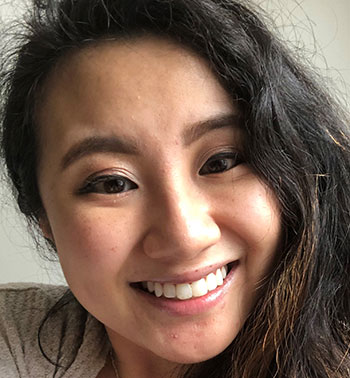Justice in the time of COVID-19
Le-Tien Duong

As a public health student, advocate and professional, I find myself at a crossroads. On one hand, we are in the midst of a pandemic of historic proportions – something the world of modern medicine has yet to experience. At the same time, the centuries of oppression, racism and violence that public health professionals have long known to impact health and wellbeing have culminated in one of the largest social movements in recent history. We’re seeing our streets flooded with people protesting against systemic racism during a time when social distancing is needed to prevent the spread of COVID-19. Responding to these two public health issues are seemingly paradoxical.
How can public health experts really advise in these situations? If we were to stay indoors, are we then implicitly reinforcing the systems that oppress the most marginalized populations? Or, if we were to encourage people to speak out in the streets, are we also saying that the prevention of COVID-19 is not a priority?
In March 2020, provinces began declaring states of emergency in response to the growing concerns around COVID-19. This entailed maintaining physical distancing protocols and not leaving the household for ‘nonessential’ trips. When photos circulated of a bustling Trinity Bellwood Park in Toronto, against the advice of the federal and provincial government, Toronto faced nationwide scrutiny. Yet, this past month, we saw our very own Prime Minister take a knee amongst a much larger crowd of protestors in Ottawa. What kind of message is Trudeau spreading to Canadians? Should we be taking a knee on the streets or staying inside?
With no vaccine expected to reach the public anytime soon, and ventilators and personal protective equipment dwindling, people are dying. They can’t breathe.
With marches, gatherings and a brutal response from police: skies are hazed with gas and smoke, blood and tears. People are dying. They can’t breathe.
So, what’s the difference?
The difference is centuries of oppression. What many non-Black Indigenous and People of Colour (BIPOC) Canadians may not realize is that being able to stay indoors and self-isolate is a privilege. BIPOC individuals, particularly Black Canadians and Indigenous Peoples, are disproportionately affected by poor social and community infrastructure, as well as a plethora of chronic and infectious diseases – with COVID-19 being no exception (Hooper, Nápoles & Pérez-Stable, 2020).
As more gaps are highlighted as a result of the pandemic, there arises the opportunity for COVID-19 to be the great equalizer. As Canadians stepping out of the safety of our homes to march as allies, we share some of the risk that Black Canadians and Indigenous Peoples face every day. Non-BIPOC will never understand, but we can listen, educate ourselves and amplify voices. When given the opportunity to create profound changes within systems that have been around far longer than the pandemic, how can we say that these protests are not essential?
References
- Webb Hooper M, Nápoles AM, Pérez-Stable EJ. COVID-19 and Racial/Ethnic Disparities. JAMA. Published online May 11, 2020. doi:10.1001/jama.2020.8598

Post a comment